Patrick Hughes
(geb. 1939 Birmingham)
"We Are All Surrealists Now"
Malerei auf dreidimensionalem Objekt 2019
66 x 146 cm x 20 cm
sign. dat. bet.
[25089]
"For the first thirty years of my career I was saying paradox is the thing, I was pushing a paradoxical kind of art,
with contradictory images like the ouroboros and the solid rainbow, but when I started making a paradoxical and contradictory perspective,
a reverse perspective, then I was no longer telling my viewers things but allowing them to experience contradictory perceptions
and so letting the art watcher find out the magic for themselves."
Patrick Hughes
Anlässlich des 80. Geburtstages des Künstlers
PATRICK HUGHES
(geb. 1939 Birmingham)
"Geometry in Motion"
Paintings and Multiples by Patrick Hughes
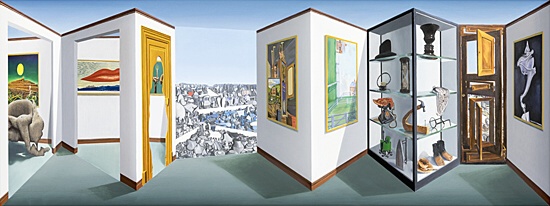
Patrick Hughes
(geb. 1939 Birmingham)
"We Are All Surrealists Now"
Malerei auf dreidimensionalem Objekt 2019
66 x 146 cm x 20 cm
sign. dat. bet.
[25089]
Zur Eröffnung am Mittwoch, den 22. Januar 2020 um 18.30 Uhr
laden wir Sie und Ihre Freunde herzlich ein.
Es spricht Prof. Dr. h.c. mult. Peter Weibel,
ZKM Zentrum für Kunst und Medien Karlsruhe
Der Künstler ist anwesend.
Zur Ausstellung erscheint ein Katalog mit 105 Seiten, 53 farbigen Abbildungen und einem einführenden Text von Prof. Dr. h.c. mult. Peter Weibel, ZKM Zentrum für Kunst und Medien Karlsruhe.
Für den Betrag von Euro 10 senden wir Ihnen den Katalog im Inland gerne zu.
Der Katalog ist ebenfalls in der Galerie Boisserée erhältlich.
Außerdem haben Sie hier auch die Möglichkeit den Katalog als PDF virtuell durchzublättern.
PATRICK HUGHES
"Geometry in Motion"
Paintings and Multiples by Patrick Hughes
Als Maler des Paradoxen hat sich der 1939 in Birmingham geborene Künstler Patrick Hughes einen internationalen Ruf erworben.
Wahrnehmung von Illusion und Wirklichkeit sowie optische Irritationen sind die zentralen Themen seiner Kunst. In illusionistischen Kompositionen
konfrontiert er den Betrachter mit dem Spiel sich ständig verändernder Perspektiven. Die Mittel und Methoden erscheinen paradox –
sind dabei dennoch von bestechender Konsequenz.
Patrick Hughes' dreidimensionale Bildobjekte sind "sich bewegende" Bilder, die die umgekehrte Perspektive, die sogenannte reverspective, als
gestalterisches Mittel einsetzen und durch sie eine neue Perspektive (einen neuen Blick) auf die Perspektive selbst werfen.
Frontal und aus der Ferne betrachtet, vermitteln die Bildobjekte zunächst den Eindruck einer Fläche. Erst aus der Nähe betrachtet,
erkennt man ihre Beschaffenheit. Die desorientierende Wirkung setzt ein, sobald der Betrachter seine Position leicht verändert.
Die irritierende Wirkung erzielt Hughes, indem er mit dem Effekt der optischen Täuschung arbeitet. Die räumliche Situation wird falsch
eingeschätzt. Es kommt zu Wahrnehmungsirritationen.
Die bevorzugten Motive seiner Gemälde und Multiples sind Architekturansichten, wobei eine Vorliebe für Gemäldegalerien und Kombinationen
von Türen und Landschaftsansichten zu erkennen ist.
Besondere Öffnungszeiten:
K1-Galerien-Matinée
Sonntag den 26. Januar 2020 von 11.00 bis 16.00
Die Galerie bleibt über Karneval vom 20. bis 25. Februar 2020 geschlossen.
Sie können sich alle Exponate der Ausstellung hier ansehen:
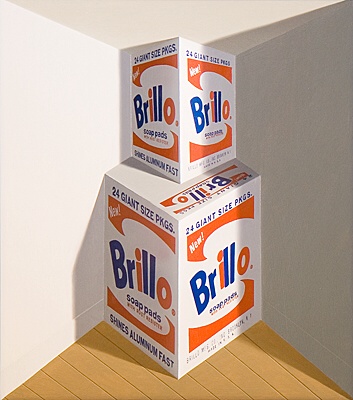
Patrick Hughes
(geb. 1939 Birmingham)
"Warholly"
Malerei auf dreidimensionalem Objekt 2008
67 x 73 cm x 18 cm
sign. dat. bet.
[25088]
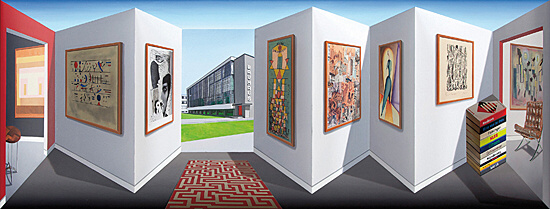
Patrick Hughes
(geb. 1939 Birmingham)
"Moving Bauhaus"
Malerei auf dreidimensionalem Objekt 2014
48 x 125 cm x 21 cm
sign. dat. bet.
[21928]
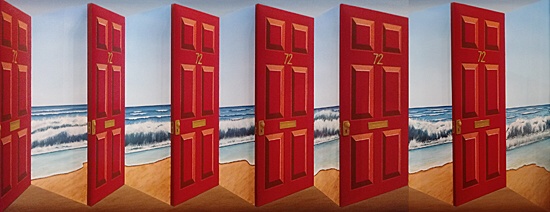
Patrick Hughes
(geb. 1939 Birmingham)
"Open Wide"
Malerei auf dreidimensionalem Objekt 2015
117 x 252 cm x 28 cm
sign. dat. bet.
[25085]
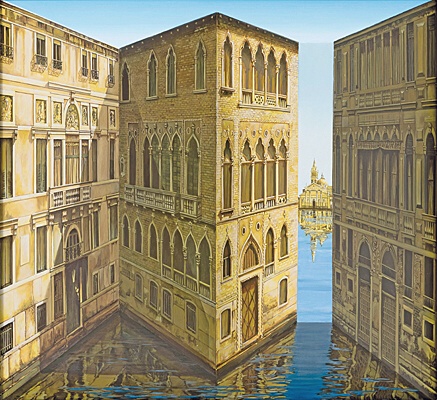
Patrick Hughes
(geb. 1939 Birmingham)
"Precious Palazzo"
Malerei auf dreidimensionalem Objekt 2017
71 x 75 cm x 18 cm
sign. dat. bet.
[24273]
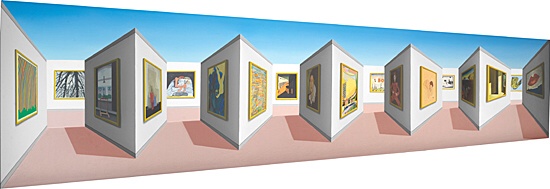
Patrick Hughes
(geb. 1939 Birmingham)
"A Newer Perspective"
Malerei auf dreidimensionalem Objekt 2017
53 x 149 cm x 21 cm
sign. dat. bet.
[25091]
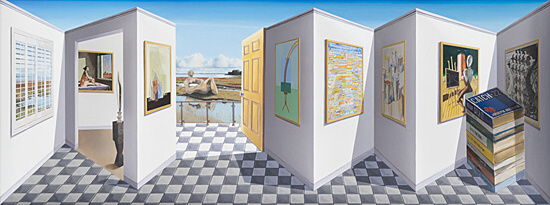
Patrick Hughes
(geb. 1939 Birmingham)
"Virtual Unreality"
Malerei auf dreidimensionalem Objekt 2017
48 x 127 cm x 25 cm
sign. dat. bet.
[23537]
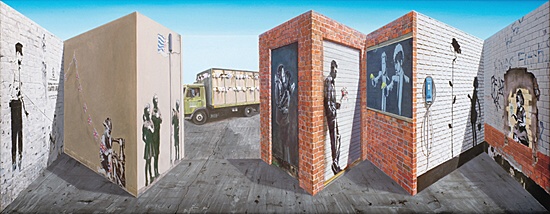
Patrick Hughes
(geb. 1939 Birmingham)
"Banksee"
Malerei auf dreidimensionalem Objekt 2018
66 x 144 cm x 21 cm
sign. dat. bet.
[24274]
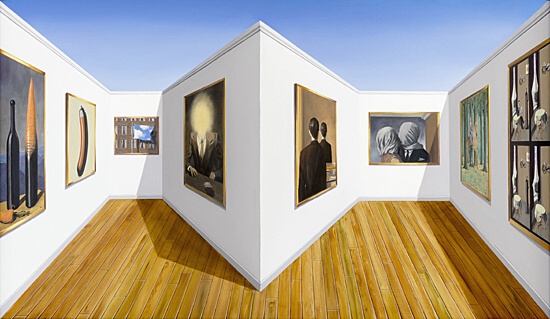
Patrick Hughes
(geb. 1939 Birmingham)
"Foolosophy"
Malerei auf dreidimensionalem Objekt 2018
76 x 118 cm x 24 cm
sign. dat. bet.
[25079]
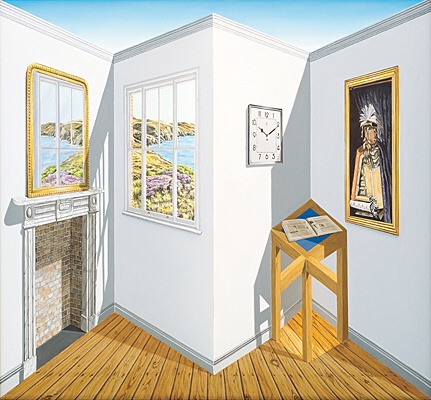
Patrick Hughes
(geb. 1939 Birmingham)
"Unstable"
Malerei auf dreidimensionalem Objekt 2018
71 x 76 cm x 18 cm
sign. dat. bet.
[24275]
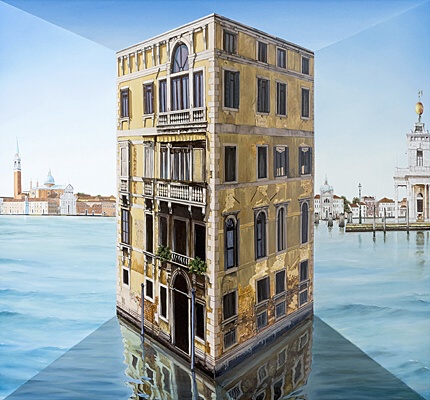
Patrick Hughes
(geb. 1939 Birmingham)
"Along the Giudecca"
Malerei auf dreidimensionalem Objekt 2018
57 x 53 cm x 16 cm
sign. dat. bet.
[25090]
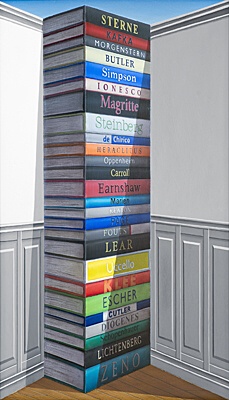
Patrick Hughes
(geb. 1939 Birmingham)
"Bibliopile"
Malerei auf dreidimensionalem Objekt 2019
60 x 40 cm x 12 cm
sign. dat. bet.
[25092]
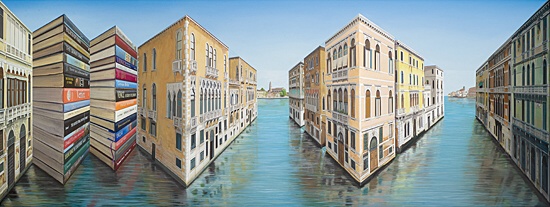
Patrick Hughes
(geb. 1939 Birmingham)
"Libri Veneziani"
Malerei auf dreidimensionalem Objekt 2019
76 x 170 cm x 26 cm
sign. dat. bet.
[25081]
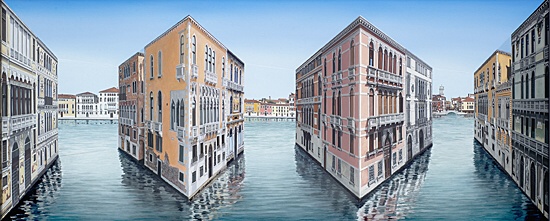
Patrick Hughes
(geb. 1939 Birmingham)
"Versatile Venice"
Malerei auf dreidimensionalem Objekt 2019
59 x 118 cm x 16 cm
sign. dat. bet.
[25087]

Patrick Hughes
(geb. 1939 Birmingham)
"We Are All Surrealists Now"
Malerei auf dreidimensionalem Objekt 2019
66 x 146 cm x 20 cm
sign. dat. bet.
[25089]
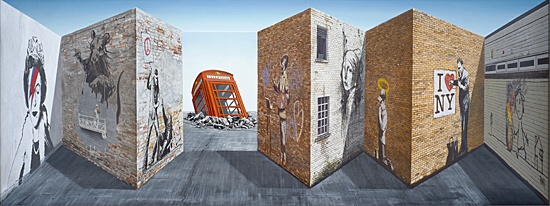
Patrick Hughes
(geb. 1939 Birmingham)
"Robbing Banks"
Malerei auf dreidimensionalem Objekt 2019
66 x 145 cm x 21 cm
sign. dat. bet.
[25086]

Patrick Hughes
(geb. 1939 Birmingham)
"Pop In"
Malerei auf dreidimensionalem Objekt 2019
95,5 x 251 cm x 33 cm
sign. dat. bet.
[25093]
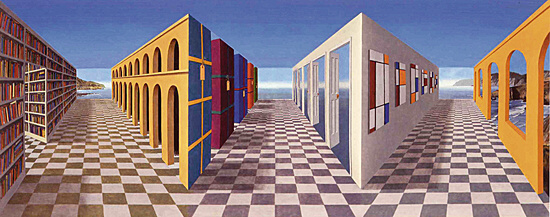
Patrick Hughes
(geb. 1939 Birmingham)
"Multiples"
Dreidimensionales Multiple mit Lithographie 1999
42 x 87 cm x 17 cm
sign. num. bez.
Auflage 35 Exemplare
[19800]
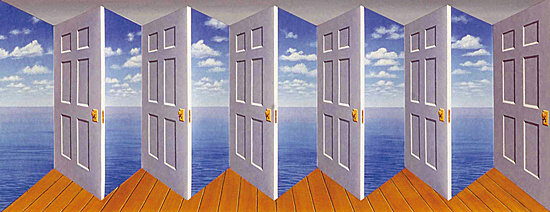
Patrick Hughes
(geb. 1939 Birmingham)
"Horizon"
Dreidimensionales Multiple mit Archival Inkjet 2000
46 x 96,5 cm x 15,5 cm
sign. num. bez.
Auflage 40 Exemplare
[22301]
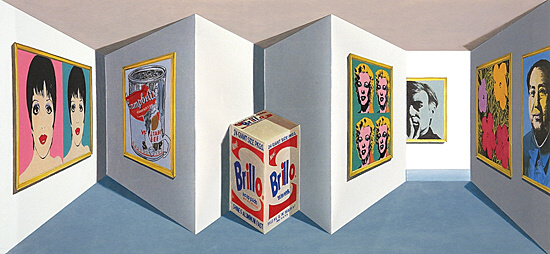
Patrick Hughes
(geb. 1939 Birmingham)
"Andy"
Dreidimensionales Multiple mit Lithographie 2003
44 x 80 cm x 19 cm
sign. num. bez.
Auflage 45 Exemplare
[20290] [22302]
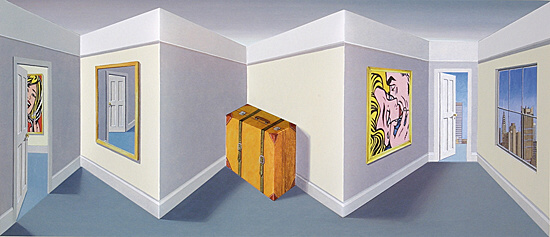
Patrick Hughes
(geb. 1939 Birmingham)
"Travel"
Dreidimensionales Multiple mit Lithographie 2004
42 x 80 cm x 19 cm
sign. num. bez.
Auflage 45 Exemplare
[19096]
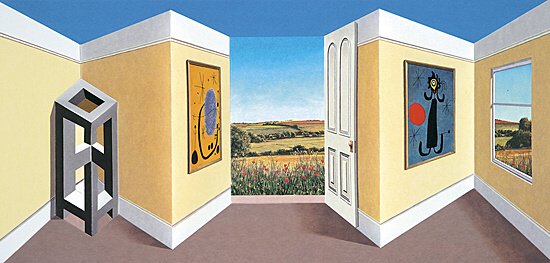
Patrick Hughes
(geb. 1939 Birmingham)
"Impossible"
Dreidimensionales Multiple mit Lithographie 2005
46 x 82,5 cm x 18,5 cm
sign. num. bez.
Auflage 45 Exemplare
[20405] [22304]
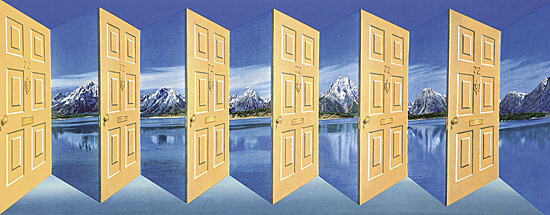
Patrick Hughes
(geb. 1939 Birmingham)
"Grand Tetons"
Dreidimensionales Multiple mit Lithographie 2006
47 x 97 cm x 15 cm
sign. num. bez.
Auflage 45 Exemplare
[19103]
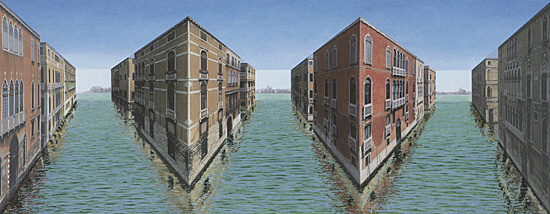
Patrick Hughes
(geb. 1939 Birmingham)
"Venezia"
Dreidimensionales Multiple mit Lithographie 2006
42 x 88 cm x 17,5 cm
sign. num. bez.
Auflage 45 Exemplare
[22305]
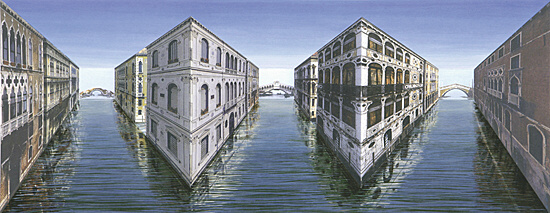
Patrick Hughes
(geb. 1939 Birmingham)
"Venice"
Dreidimensionales Multiple mit Lithographie 2006
42 x 88 cm x 18 cm
sign. num. bez.
Auflage 45 Exemplare
[19799]
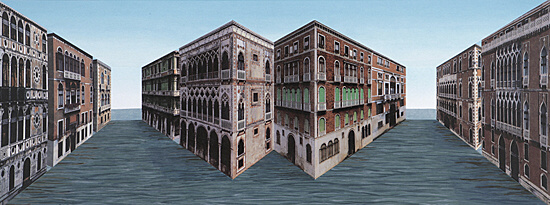
Patrick Hughes
(geb. 1939 Birmingham)
"Grand Canals"
Dreidimensionales Multiple mit Lithographie 2007
45 x 95,5 cm x 22 cm
sign. num. bez.
Auflage 45 Exemplare
[22306]
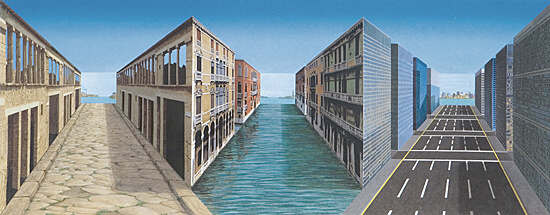
Patrick Hughes
(geb. 1939 Birmingham)
"History"
Dreidimensionales Multiple mit Lithographie 2007
42,5 x 88 cm x 17 cm
sign. num.
Auflage 45 Exemplare
[18582] [22307] [23438]
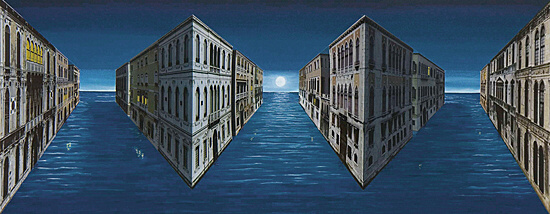
Patrick Hughes
(geb. 1939 Birmingham)
"Moonshine"
Dreidimensionales Multiple mit Archival Inkjet 2009
42,5 x 88 cm x 17,5 cm
sign. bez.
Auflage 45 Exemplare
[18933] [22309]

Patrick Hughes
(geb. 1939 Birmingham)
"Cloudy"
Dreidimensionales Multiple mit Archival Inkjet 2008
46,5 x 97 cm x 15 cm
sign. num. bez.
Auflage 45 Exemplare
[22308]
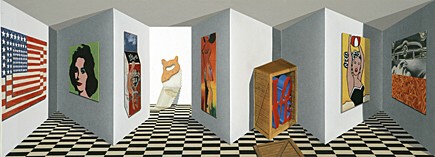
Patrick Hughes
(geb. 1939 Birmingham)
"Pop"
Dreidimensionales Multiple mit Lithographie 2008
43 x 95 cm x 18 cm
sign. num. bez.
Auflage 45 Exemplare
[22302]
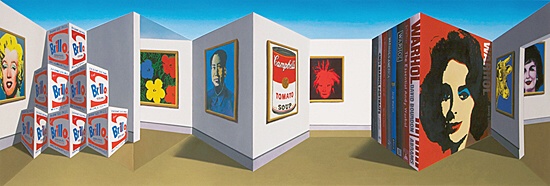
Patrick Hughes
(geb. 1939 Birmingham)
"Handy"
Dreidimensionales Multiple mit Archival Inkjet 2012
45 x 108,5 cm x 18 cm
sign. num.
Auflage 50 Exemplare
[20870]
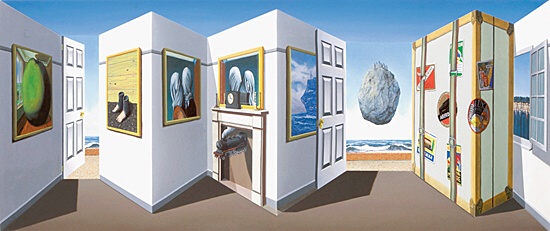
Patrick Hughes
(geb. 1939 Birmingham)
"Moving"
Dreidimensionales Multiple mit Archival Inkjet 2013
45,5 x 90 cm x 17,5 cm
sign. num.
Auflage 50 Exemplare
[21265] [21329] [21339] [21342]
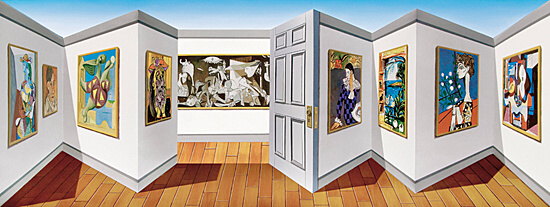
Patrick Hughes
(geb. 1939 Birmingham)
"Pablo"
Dreidimensionales Multiple mit Archival Inkjet 2013
53 x 117 cm x 20 cm
sign. num.
Auflage 40 Exemplare
[21485] [21486] [21783]
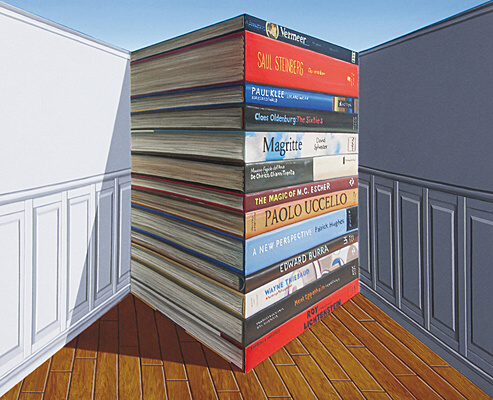
Patrick Hughes
(geb. 1939 Birmingham)
"Booking"
Dreidimensionales Multiple mit Archival Inkjet 2014
45 x 53 cm x 16 cm
sign. num.
Auflage 50 Exemplare
[21834] [23446]
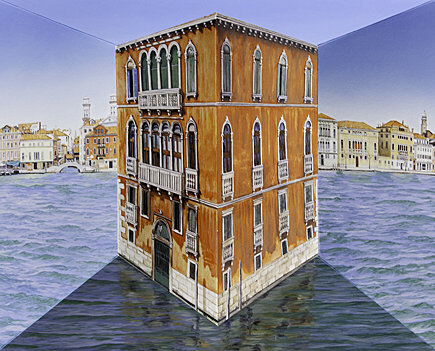
Patrick Hughes
(geb. 1939 Birmingham)
"Floating"
Dreidimensionales Multiple mit Archival Inkjet 2014
45 x 53 cm x 16 cm
sign. num.
Auflage 50 Exemplare
[21826]
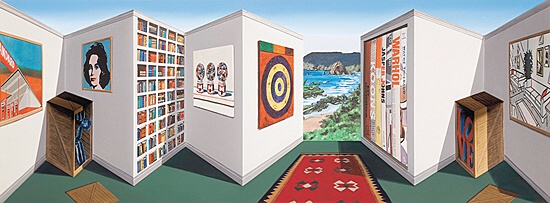
Patrick Hughes
(geb. 1939 Birmingham)
"Poppier"
Dreidimensionales Multiple mit Archival Inkjet 2014
45 x 101 cm x 18 cm
sign. num.
Auflage 50 Exemplare
[22206]
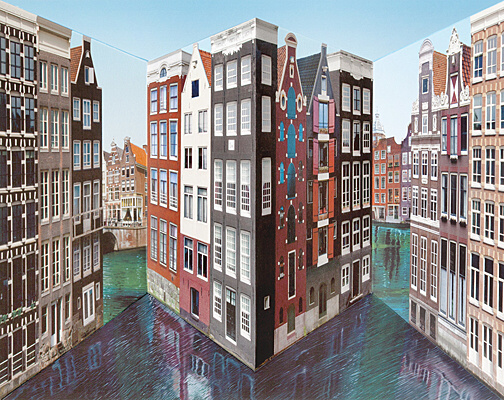
Patrick Hughes
(geb. 1939 Birmingham)
"Amsterdam"
Dreidimensionales Multiple mit Archival Inkjet 2015
45 x 53 cm x 16 cm
sign. num.
Auflage 50 Exemplare
[22792]
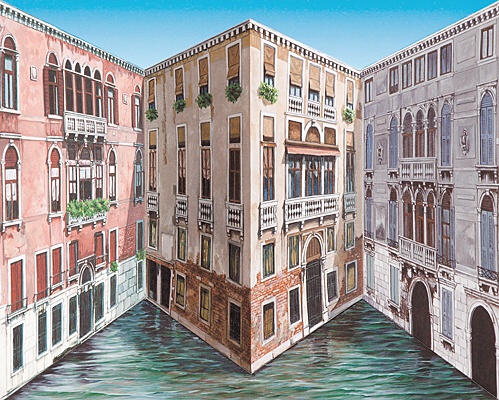
Patrick Hughes
(geb. 1939 Birmingham)
"Corner"
Dreidimensionales Multiple mit Archival Inkjet 2015
45 x 53 cm x 16 cm
sign. num.
Auflage 50 Exemplare
[22733] [22735] [22799] [22944] [22945] [23445]
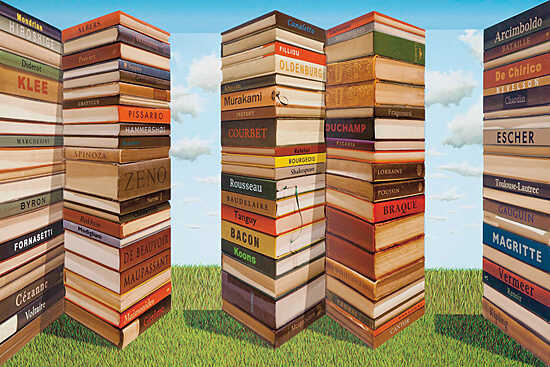
Patrick Hughes
(geb. 1939 Birmingham)
"Bookends"
Dreidimensionales Multiple mit Archival Inkjet 2015
90 x 64 cm x 17 cm
sign. num.
Auflage 50 Exemplare
[22335] [22667]
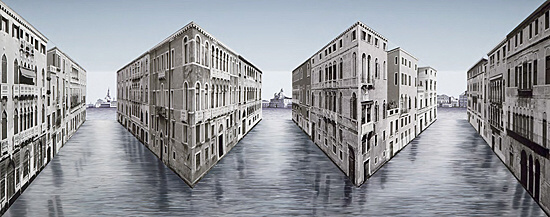
Patrick Hughes
(geb. 1939 Birmingham)
"Silvery"
Dreidimensionales Multiple mit Archival Inkjet 2015
53 x 112 cm x 22 cm
sign. num.
Auflage 50 Exemplare
[22786] [22787] [22943]
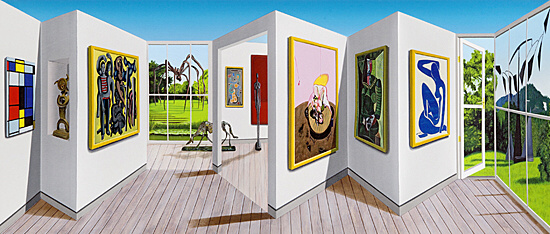
Patrick Hughes
(geb. 1939 Birmingham)
"Beyeler"
Dreidimensionales Multiple mit Archival Inkjet 2016
45 x 90 cm x 18 cm
sign. num. bez.
Auflage 50 Exemplare
[23440]
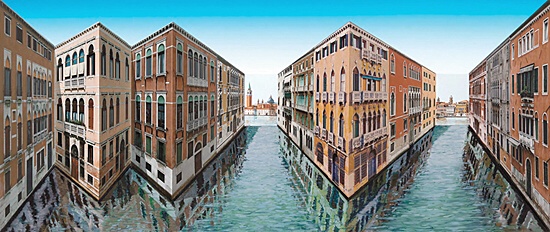
Patrick Hughes
(geb. 1939 Birmingham)
"Serenissima"
Dreidimensionales Multiple mit Archival Inkjet 2016
52 x 107 cm x 20 cm
sign. num.
Auflage 50 Exemplare
[23434] [23435]
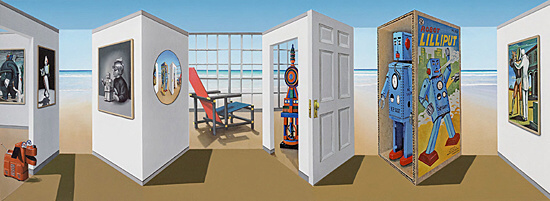
Patrick Hughes
(geb. 1939 Birmingham)
"Robotski"
Dreidimensionales Multiple mit Archival Inkjet 2017
45 x 100 cm x 16 cm
sign. num.
Auflage 50 Exemplare
[23535] [23576]
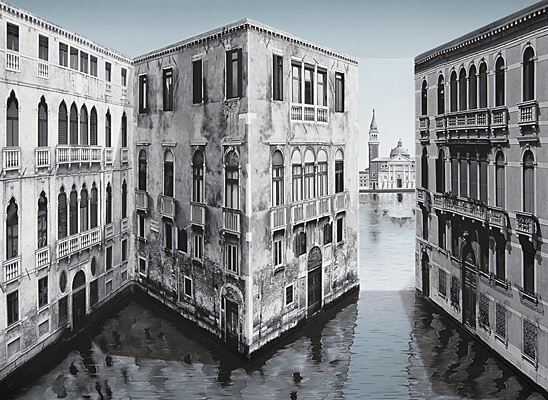
Patrick Hughes
(geb. 1939 Birmingham)
"Silver"
Dreidimensionales Multiple mit Archival Inkjet 2017
46 x 58 cm x 17 cm
sign. num.
Auflage 50 Exemplare
[23416] [23417]
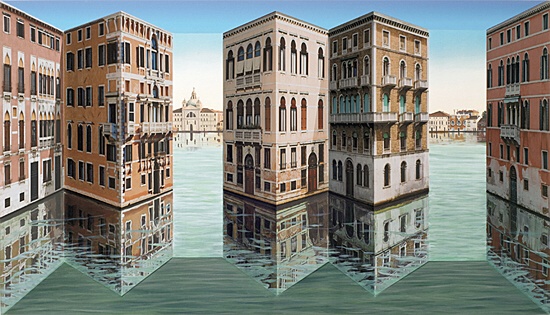
Patrick Hughes
(geb. 1939 Birmingham)
"Lagoon"
Dreidimensionales Multiple mit Archival Inkjet 2018
57 x 89,1 cm x 15,6 cm
sign. num.
Auflage 75 Exemplare
[24276] [24523]
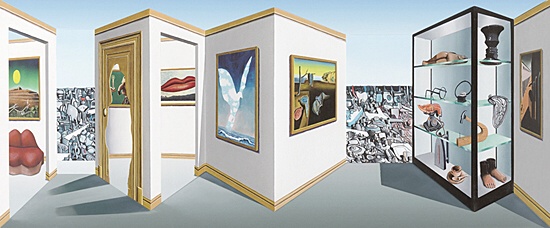
Patrick Hughes
(geb. 1939 Birmingham)
"Surreal"
Dreidimensionales Multiple mit Archival Inkjet 2018
46 x 90 cm x 18,5 cm
sign. num.
Auflage 50 Exemplare
[24524] [24525] [24527] [24528] [24529]
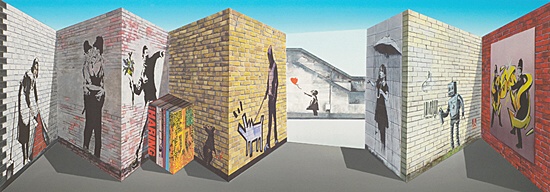
Patrick Hughes
(geb. 1939 Birmingham)
"Banksy"
Dreidimensionales Multiple mit Archival Inkjet 2018
45 x 102 cm x 17 cm
sign. num.
Auflage 100 Exemplare
[24465]
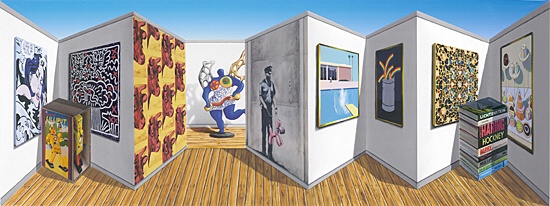
Patrick Hughes
(geb. 1939 Birmingham)
"Poppish"
Dreidimensionales Multiple mit Archival Inkjet 2019
46 x 101,5 cm x 17,5 cm
sign. num.
Auflage 75 Exemplare
[24754] [24755]
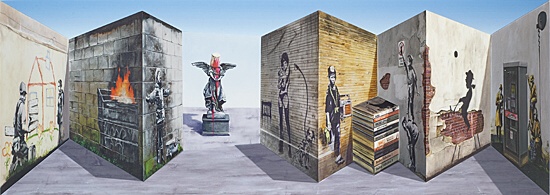
Patrick Hughes
(geb. 1939 Birmingham)
"Banksee"
Dreidimensionales Multiple mit Archival Inkjet 2019
44 x 102 cm x 17 cm
sign. num.
Auflage 75 Exemplare
[24943] [24944] [24945] [24946] [24947]
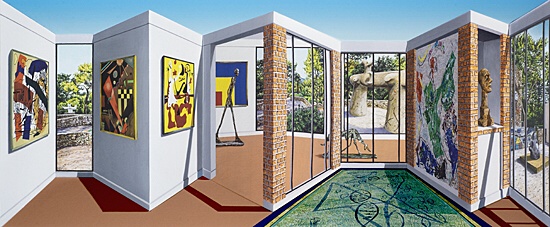
Patrick Hughes
(geb. 1939 Birmingham)
"Maeght"
Dreidimensionales Multiple mit Archival Inkjet 2019
45,5 x 90,5 cm x 17,5 cm
sign. num.
Auflage 75 Exemplare
[25102]
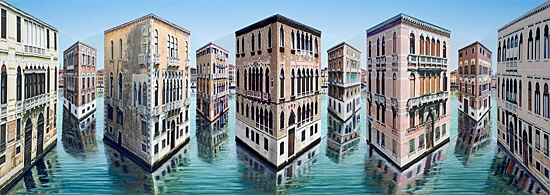
Patrick Hughes
(geb. 1939 Birmingham)
"In and Out"
Dreidimensionales Multiple mit Archival Inkjet 2019
45,5 x 111 cm x 21 cm
sign. num.
Auflage 75 Exemplare
[25103]
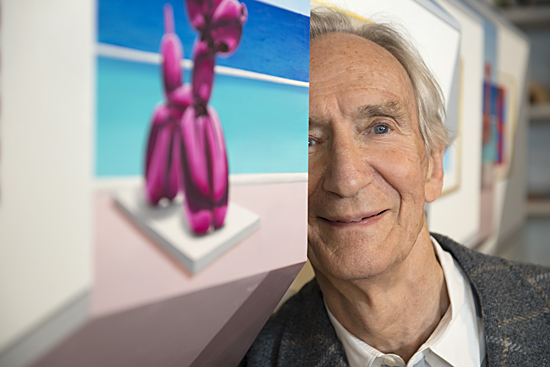
Patrick Hughes
© Foto: Lawrence Lawry 2019
Patrick Hughes – Biography
At the young age of three or four, whilst staying at his grandparents’ house in Warmingham Road, Crewe, Patrick Hughes would sleep in The Glory Hole – the cupboard under the stairs.
Lying awake listening to the air-raid sirens and falling bombs, Patrick would look up and stare at the stairs. "We were looking up at these stairs the wrong way round – up and down,
up and down – stairs that only a fly could walk up. It must have made a strong impression: being bombed and in the dark and sleeping with my mother and seeing everything the wrong way round.”
Patrick has made a life-long career out of doing things the other way round.
Patrick Hughes was born, Peter David Hughes in October 1939 in Birmingham, the eldest son of Peter and Florence Hughes. His father was a commercial traveller in groceries and a salesman,
and his mother a housewife. The family moved around, living in suburban Hayes in Middlesex and later in Hull. It was an unhappy household, a quarrelsome and hostile environment. Patrick’s
refuge was in books and in his imagination. Books came from the public library as his was a book-less house. "A book is a way out…” says Patrick, "…they are like little doors – you open
the little hinged rectangle of the book and step out. I escaped from my suburban hell hole of an upbringing through the book.”
In 1950 Patrick went to Hull Grammar School where he did ‘O’ level art, taught by Ian D. H. Fothergill. Fothergill encouraged the students to write about modern art and Patrick wrote in
defense of Picasso. But it was Fothergill’s set designs for the school plays, with their use of perspective and painted shadows which amazed Patrick and left a lasting impression.
At seventeen Patrick left school, home and Hull, for London, never to return. He took at job as a window dresser and salesman at Rubans de Paris in London’s West End, near to the Portal
Gallery. He spent his spare time reading and writing and visiting local galleries, looking at works by René Magritte, Marcel Duchamp and Paul Klee and taking in the contemporary scene.
The following year, Patrick met his first wife Rennie Paterson, then an art student at Reading. Three sons, John, James and Solomon, followed in quick succession and Patrick and Rennie
returned to live with her parents near Leeds.
In 1959 Patrick enrolled at the Leeds Day Training College to study English literature with a view to teaching English and a writing career. On the first day, asked to write an essay on
six books he had recently enjoyed, Patrick wrote about N. F. Simpson, Eugène Ionesco, Franz Kafka, Lewis Carroll, Samuel Butler and Christian Morgenstern. But according to Mrs. Hanson,
the English teacher, this was not English literature. English literature was the nineteenth century writers, the Brontës, George Eliot, Jane Austen and Charles Dickens. She advised him to
study art instead. So Patrick’s art career began out of acts of rejection and suggestion, not through intention.
The Art Department was run by Muriel Atkinson and John Jones. They encouraged creativity and experimentation. Patrick began making low reliefs in plaster. Then he began making cut-outs in
paper and wood. Painting white emulsion paint as the ground and using household gloss paint as the finish. It was a surprise gift from John Jones for his twenty-first birthday – a subscription
to Art News and Review – that stimulated Patrick to send off slides of his work to the Portal Gallery in early 1961. Later that year, on the Monday after the Friday when Patrick completed
his course at Leeds Day College, he had a highly successful solo exhibition at the Portal Gallery, London. It was the first one-man show by a so-called Pop Artist.
The critics of the day George Melly and David Sylvester were early champions. Sylvester wrote, "This artist has the gift, synonymous with creativeness, of being able to be surprised by what
the rest of us take for granted. Here is a painter who really has something to say, and his arrival on the scene gives me a rare sense of exhilaration.” Parallels were drawn with the works
of Harold Pinter, Paul Klee, Samuel Beckett and Spike Milligan. Patrick sold two-thirds of the forty or so paintings exhibited.
With the success of his Portal Gallery show in 1961, Patrick’s job moved from schoolteaching to art lecturing at Bradford School of Art in 1963, and then in 1964 at Leeds College of Art.
Patrick’s colleagues included the artists Anthony Earnshaw, Robin Page and George Brecht, and his students – Trevor Winkfield, Glen Baxter, Les Coleman, Jeff Edwards, Les Evans and Paul Hammond.
It was whilst at Leeds, that Patrick made two of his seminal works, Infinity, 1963, inspired by standing on the railway station at Leeds and looking at the railway tracks, and his first reverspective,
the Sticking-out Room of 1964. In 1968–69 Patrick was giving lectures about paradoxes and jokes in Exeter and London and Leeds with George Brecht, the Fluxus artist. Several years later, in 1975,
they were to collaborate on Vicious Circles and Infinity, A Panoply of Paradoxes, the first ever book on the paradox. It has sold 100,000 copies and been translated into Japanese, German,
Dutch and Spanish.
Around this time, Patrick began painting vicious circles and versions of the ouroboros in search of a theoretical basis for his ideas. He had moved his family back to London and commuted to
Leeds to teach.
In 1970, Patrick was one of ten artists invited to take a room at the Institute for Contemporary Art in London. He constructed a 12ft x 8ft sticking-out room within the room – a large paradoxical
object, which visitors could not just look at but could experience for themselves. That same year Patrick met Angela Flowers who was about to open her own gallery. He was chosen as her first artist
to show and he has been showing with Angela Flowers to this day.
In 1970 Patrick and Rennie divorced. In 1971 Patrick married the artist and writer Molly Parkin. They parted in 1980, divorcing in 1981.
The first half of the 1970s saw Patrick living in Chelsea and Ladbroke Grove and painting rainbows. The rainbows became very popular as prints, which he made with Coriander Studios for Christie’s
Contemporary Art and as postcards for Camden Graphics. Over the years about 1,000,000 rainbow postcards and 10,000 screenprints have been sold. People thought the rainbows were cheerful. But Patrick
felt they were misunderstood; they were acts of subversion, visual puns. His interest lay in the contradiction of turning or fixing an experience or event into a solid thing.
In 1975, sustained by his sales of the rainbows and his book, Patrick moved to St Ives and leased a studio with a ladder down to the beach. It was here he made On Reflection: St Ives Bay. In 1979 he
left the village of St Ives for the village of the Chelsea Hotel in New York, another artists’ colony where he started to write More On Oxymoron. He hung out with the artists Keith Haring and Kenny
Scharf, the musician Klaus Nomi and the theatre director Charles Ludlam. It was whilst in New York that he began to work entirely on paper as he found he could get more ideas down faster. Patrick
returned to London in 1983 and stayed at the Chelsea Art Club and had a studio in Notting Hill Gate for a short while. After showing at Angela Flowers Gallery that year, Patrick decided he needed
to change his method of working which had typically involved a slow gestation with months of thinking, a few days of making, and a few minutes of contemplation by the viewer. Moving again, this
time to a squat in Thornhill Square in North London, with his son James Heartfield, Patrick began painting small watercolours, usually three a day. This technique liberated him to have lots of
ideas and variations on themes. Motifs included the crucifix, skeletons, eggs, yin and yang, and shadows, amongst other ideas. He made hundreds and sold most of them. This change enabled Patrick
to see where he was going and what really interested him.
When Patrick moved to Belsize Park in 1985 he went back to painting on canvas but in oils. In pictures like Self-Criticism he began to look at the relation between representation and reality.
He re-examined the rich vein of the old Sticking-out Room of twenty years earlier, he explored reverse perspective, shaped boards and used all kinds of imagery.
In 1987 Patrick met and married his third wife, the historian and writer, Dr. Diane Atkinson. Together they moved to East London, which is where they live today.
2011 marked Patrick Hughes’ Fifty Years in Show Business; to coincide with this half century, Patrick had a major retrospective exhibition at Flowers Gallery, London. Also published his third book
on the paradox and oxymoron, Paradoxymoron. In 2014 Patrick was awarded an honorary degree from the University of London’s School of Advanced Study, in recognition of his outstanding contribution to
education and research. His artworks continue to be exhibited worldwide, including recently in America, Europe, Japan, Korea and Switzerland.
Busier than ever in 2015, Patrick is featured in the continuing touring group exhibition Visual Deception II; Into the Future in Nagoya, Japan. Op Art - Kinetic - Light in the Würth Collection.
Josef Albers and Vasarely to Patrick Hughes opens in May at Museum Würth. Imminent solo exhibitions include Winsor Gallery, Vancouver opening January 2015.
A substantial 240 page monograph, A New Perspective, with essays by Professor Dawn Ades, Professor Martin Kemp and Dr. Thomas Papathomas is now available.
Als Maler des Paradoxen hat sich der englische Künstler Patrick Hughes, 1939 in Birmingham geboren, einen internationalen Ruf geschaffen. Wahrnehmung von Illusion und Wirklichkeit sowie optische Irritationen sind Hauptthemen seiner Kunst.
In illusionistischen Kompositionen konfrontiert er den Betrachter mit dem Spiel sich ständig verändernder Perspektiven. Mit der Umkehrung der herkömmlichen Perspektive macht er deutlich, wie festgefahren unsere Sehgewohnheiten sind – die perspektivische Prägung des Menschen ist so stark, dass sie alle anderen Raumerfahrungen negiert.
Patrick Hughes` Methoden erscheinen paradox und sind dabei dennoch von bestechender Konsequenz. Seine Werke überraschen, irritieren und regen an, nachzudenken und wollen das Bewusstsein für Raum und Bewegung sensibilisieren.